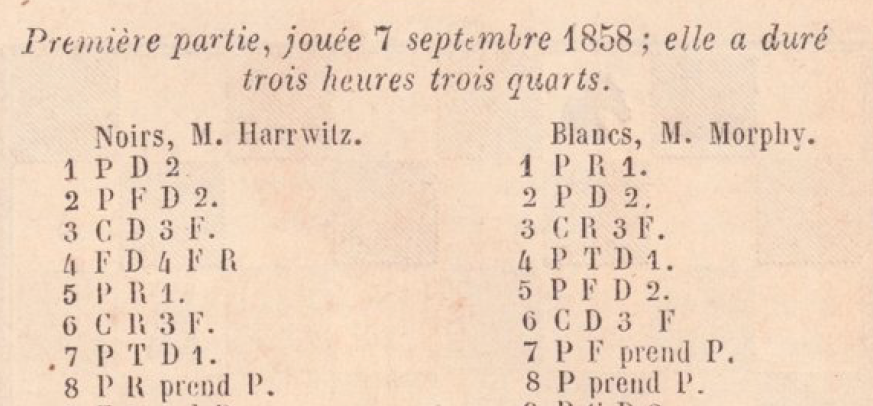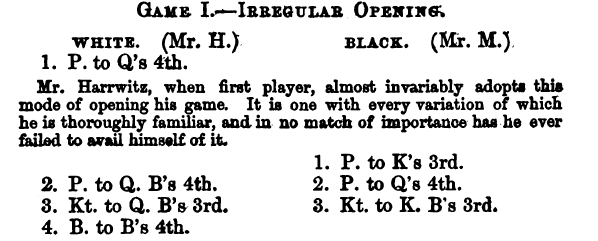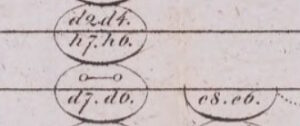You all know that White always plays first in chess. But did you know that this has not always been the case?
Discover the history of the first move in chess in this article.
For a long time, the two opponents chose (or drew lots for) the player who would start the game. This player could then choose his or her color.
In the Traité théorique et pratique du jeu des échecs, par une société d’amateurs, published in 1775, we find examples of games started by Black:

Thanks to the algebraic-like notation used in this book, we learn that it’s really Black, with the King on his left, who starts, and that it’s not simply a question of reversing the color of the pieces by placing the black pieces in place of the white (in which case Black would have the King on his right).
This possibility persisted, as Daniel Harrwitz published the first game of his match against Paul Morphy in Le Monde Illustré on October 28, 1858, like this:

Books published at the time, however, reproduce the same game with White taking the lead. This is the case in Johann Löwenthal’s 1860 book Morphy’s games of chess:

Johann Löwenthal thus followed his own recommendation to the First American Chess Congress (from The Book of the First American Chess Congress, New York 1857, page 84):

(The “Pawn and Move” opening deals with the start of a game when one player gives his opponent the advantage of a pawn and starting the game. This is an example of the “games at odds” played at the time, which no longer exist).
We don’t know exactly when or how the rule that White always starts the game came about. In any case, the rule was adopted at the 5th American Chess Congress, held in New York in January 1880 (extract from The Fifth American Chess Congress, New York 1881, page 126):

In 1889, world champion Wilhelm Steinitz wrote in The Modern Chess Instructor, page xii:

The current rule is clearly indicated in the first version of the Fédération Internationale des Echecs (FIDE) rules, published (in French) in 1930:

White always has the move, that is play the first move of the game.
You can therefore continue to play the first move when you have White!
This article is a translation of the following article published on my French website.


Be First to Comment